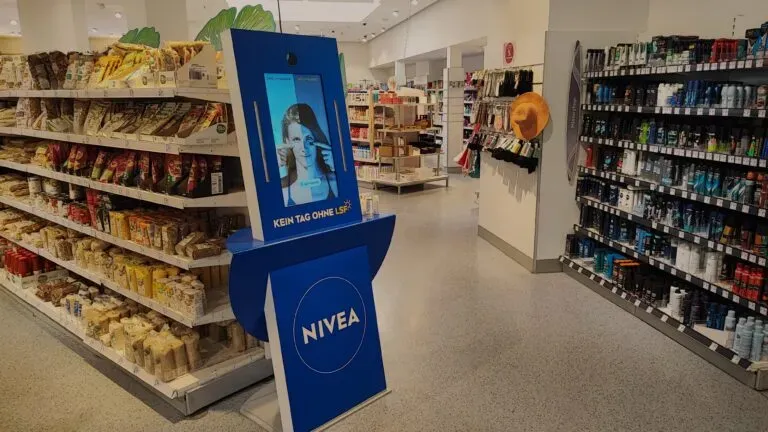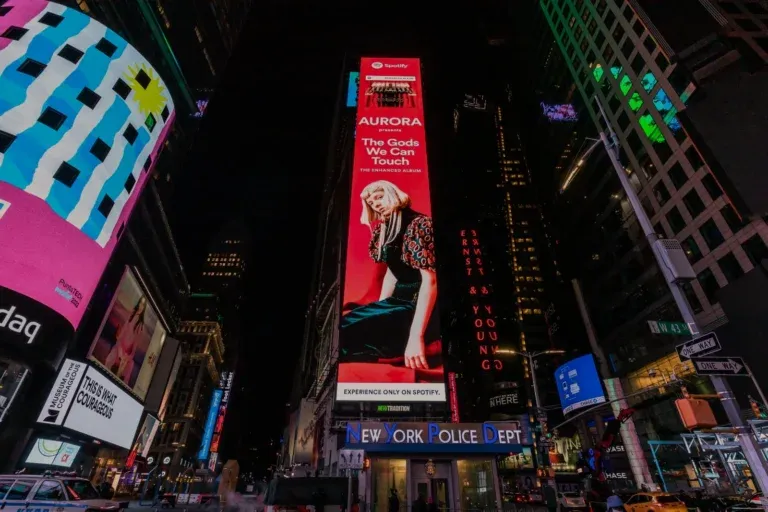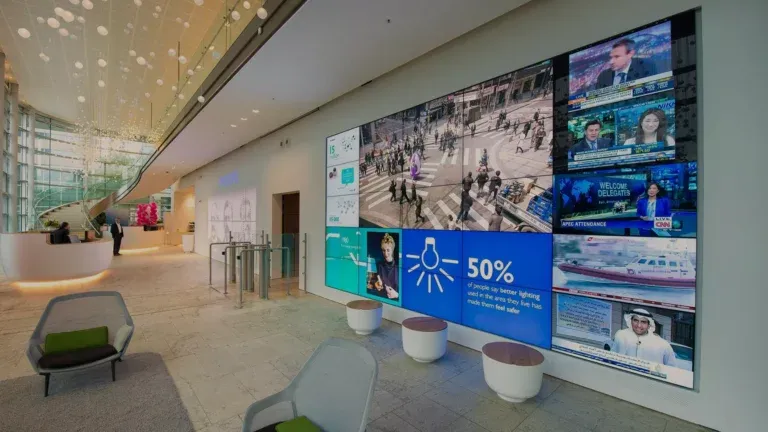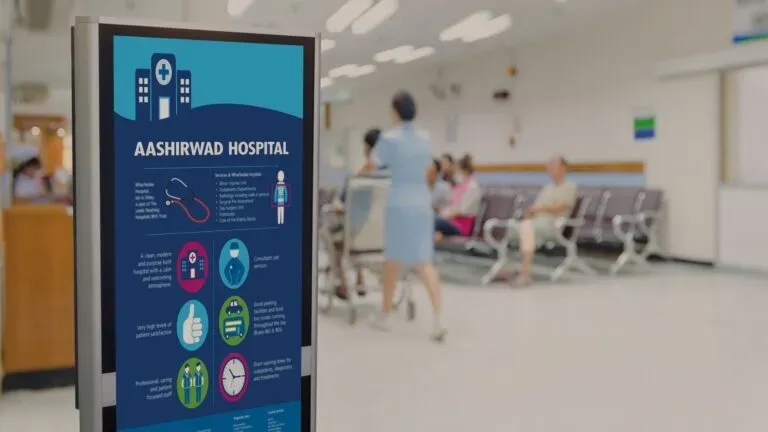Static DOOH advertising along roads in 2024
It is accepted that digital advertising on DOOH (Digital Out-of-Home) involves placing dynamic advertising materials in the form of video or animation.
However, according to transportation safety regulations in many countries, dynamic content is prohibited because it can distract drivers.
In such countries, static digital images (banners) are typically placed on stationary billboard structures (3×6m and 4×8m). To manage advertising campaigns with static materials, it’s also important to use software for billboards, including digital billboard players and CMS (Content Management System) systems.
Who else might benefit from static roadside advertising, and for what purposes?
There are countries where you can drive on highways for 2-3 hours and still remain within the same region. Roadside advertising is useful for everyone:
– Tired drivers and passengers looking for a hotel or diner;
– Auto tourists whose dashboard shows a “check” light or simply need to change oil and filters;
– Travelers who want to visit an interesting place on the way to their destination;
– Local residents who regularly commute to work or run errands in nearby towns and haven’t yet heard about a new establishment nearby or available discounts;
– People used to shopping at large shopping centers on the outskirts during weekends. For example, in Lviv, these include Victoria Gardens, which attracts shoppers from surrounding areas, or Forum Lviv, which receives thousands of visitors from the central and northern parts of the city.
This advertising is also suitable for:
– Large advertisers with retail outlets in district or regional centers who want to inform potential customers in advance;
– Medium, small, and micro-businesses located near the highway;
– Local governments for placing social advertisements.
What are the advantages of roadside advertising?
– Wide audience reach, as static displays are located on regional and federal highways, and a large number of people see them;
– The ability to place a large, unique sales offer using several billboards positioned one after the other;
– Relatively low cost compared to placing outdoor ads in populated areas or using other large-scale promotion methods, such as television;
– Long-lasting exposure to the audience, as a message on a large billboard is visible from dozens of meters away, and consumers can read and remember the information even while moving at high speed.
For effective roadside advertising, it is important to choose the right installation locations, develop effective creatives, and ensure regular updates. Programmatic DOOH can help automate this process and make the campaign more manageable.
It’s a mistake to think that roadside advertising goes unnoticed because drivers are focused on the road. On average, there are up to 3 people in a passenger car, and for every 1,000 people, there are only 315 cars (2023 data). Don’t forget about bus passengers, suburban route passengers, and taxi riders — all these people can see your advertisement and become your customers.
Space for creativity
Many advertisers forget (or don’t consider) that on several billboards placed one after the other along the highway, they can present multiple unique sales offers, each complementing the previous one.
We often encounter clients who try to fit too much information into a single design, but in outdoor advertising, it’s better to use no more than 7 words. By distributing the ad message across 3-5 billboards, it’s possible to convey a much more comprehensive message to the target audience, including all the benefits, contact details, images, and other information that influences decision-making.
For example, one can recall an old social ad campaign from Guinness. The globally renowned beer producer warned that it’s not advisable to drive under the influence. Guinness’s creatives used several warning road signs and “disassembled” them into 4 parts, placing them one after another along the road. The driver would only see the full sign several dozen meters after the first one. The creators of this social ad campaign wanted to remind people that consuming alcohol slows reaction time, and a few extra meters could prove fatal.
Prospects for roadside advertising
In recent years, there has been active reconstruction of highways in various regions, as the load on them has increased due to temporarily closed airports, increased tourist traffic, and the delivery of goods to new regions. For example, current projects include the reconstruction of highways in southern regions, increasing the capacity of tourist routes, and developing transportation corridors between regional centers.
As the flow of vehicles grows, so does the demand for outdoor advertising, particularly in the Digital Out Of Home (DOOH) segment. Digital billboards, using video ads and software technologies for DOOH and programmatic DOOH, offer advertisers broader opportunities to engage the audience. Digital billboard players allow dynamic content changes, adapting to the time of day or current traffic conditions on the roads. These technologies help make advertising more interactive and targeted.
Modern Digital Out Of Home (DOOH) technologies allow for more effective advertising campaigns that capture the attention of drivers and passengers, enhancing their interaction with brands.
With the growing interest in outdoor advertising, new potential is emerging for the use of screens within DOOH networks. These screens not only capture attention with bright and dynamic content but can also adapt to the environment, including changes in weather conditions or time of day. This allows advertisers to tailor their campaigns to specific target audiences passing by.
One of the key advantages of such screens is the ability to integrate with a centralized video management system. Through this system, advertisers can manage all their billboards from a single interface, greatly simplifying the process of planning and launching campaigns. Specifically, content can be easily changed, display schedules set, and even the effectiveness of ads tracked in real-time.
Additionally, DOOH networks have the ability to implement programmatic advertising, enabling advertisers to purchase ad space in an automated mode. This means advertisers can obtain data on their target audience and ad performance, optimizing their campaign spending. For example, if certain content proves to be particularly successful, it can be more actively distributed on advertising screens, maximizing reach and the impact of the advertising message.
Thus, with the use of advertising screens and new technologies in DOOH networks, roadside advertising is becoming more adaptive and interactive. This not only attracts the attention of drivers and passengers but also increases the likelihood that the ad will stick in the minds of the target audience. As a result, investing in such advertising formats can become an effective tool for achieving business goals and developing a brand in the market.
Conclusion
In today’s world, roadside advertising is becoming an increasingly important tool for capturing consumer attention. In particular, the use of digital technologies, such as advertising screens and centralized management systems, allows advertisers to adapt their messages, making them more relevant and attractive.
The relevance of outdoor advertising is growing each year as traffic increases and market competition intensifies. Thanks to innovative solutions, advertisers have the opportunity to effectively engage with their audience, boosting brand awareness and enhancing their competitiveness.
Thus, roadside advertising has enormous potential for development, and those who can seize these opportunities will significantly strengthen their position in the market. Understanding new technologies and trends in the field of outdoor advertising will be the key to success in this dynamic and rapidly changing industry.
Advision — Content Management System for remote management and media planning of video and audio content broadcasting. We help offline businesses and advertising companies automate their workflows and implement a robust Digital Signage infrastructure using our proprietary software and hardware solutions.
Contact us, and we will help you implement the most modern technologies to solve your problems!
Share the news




















